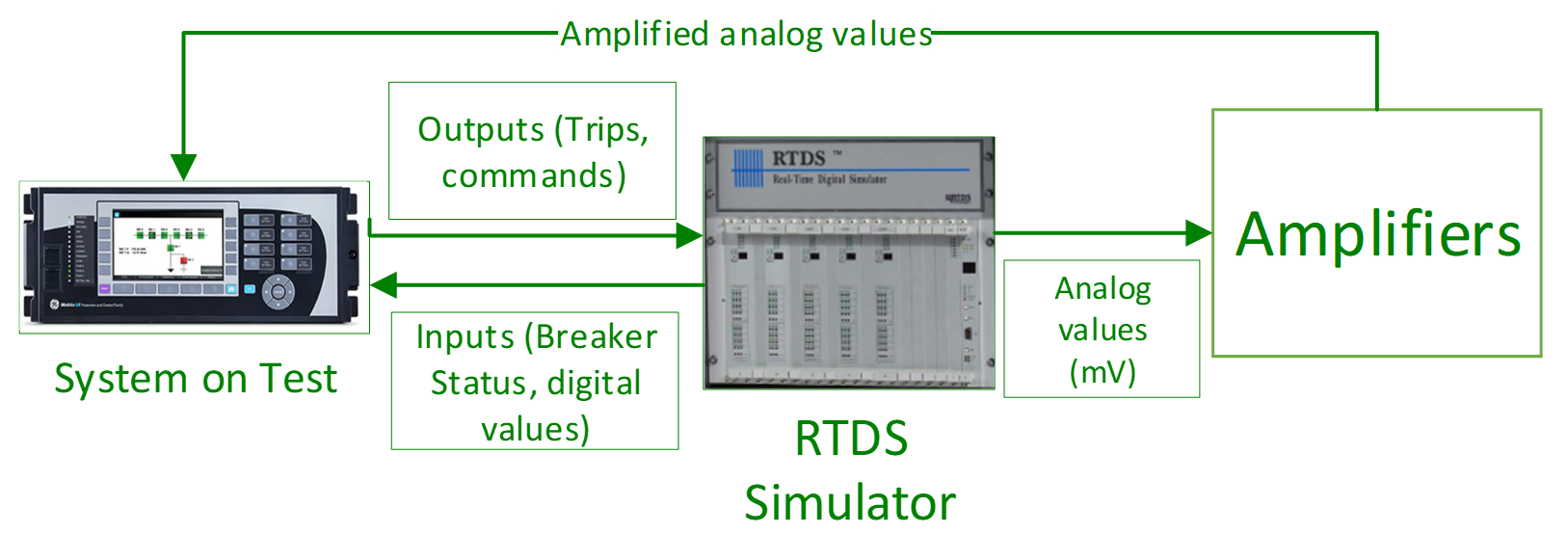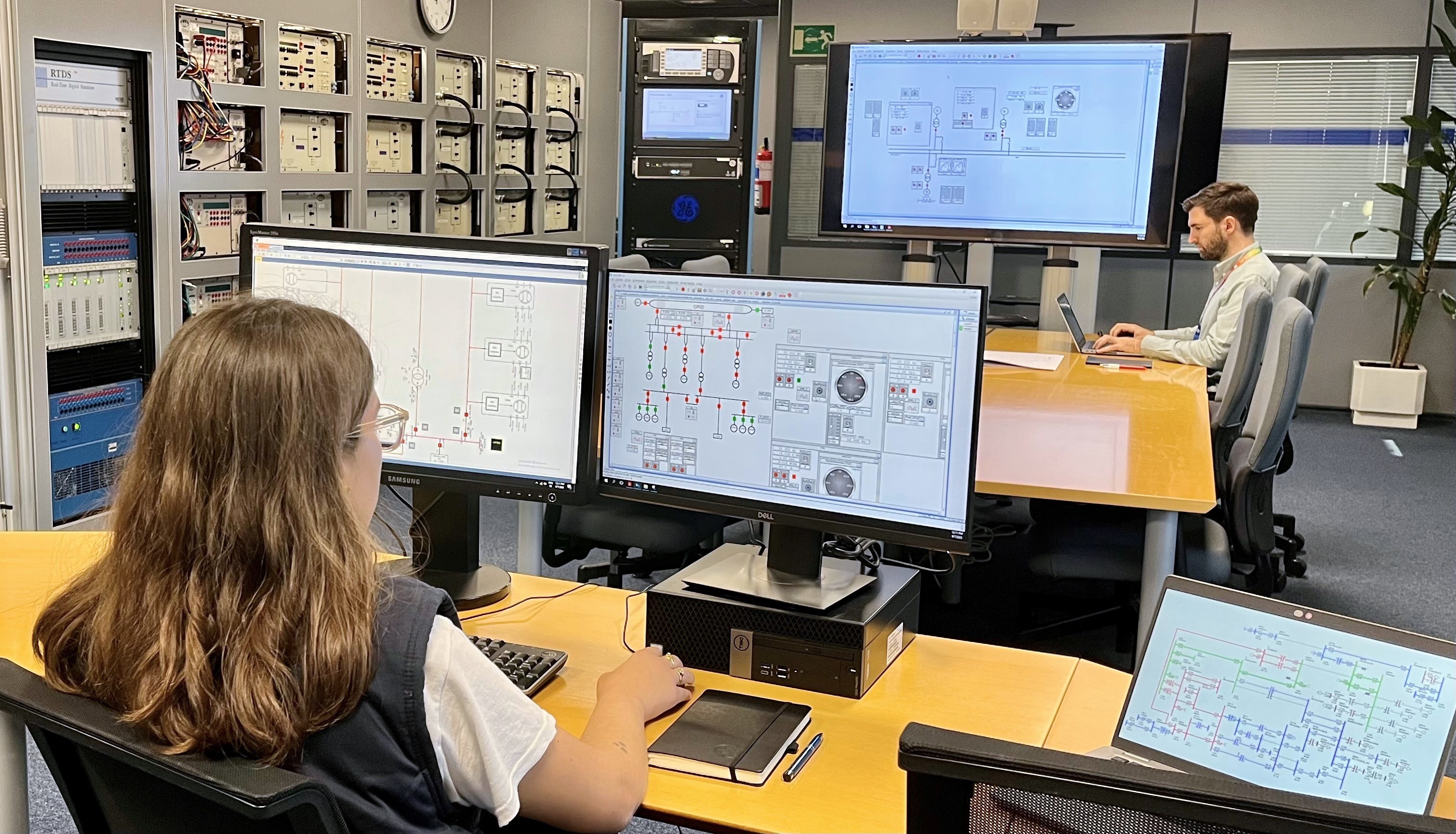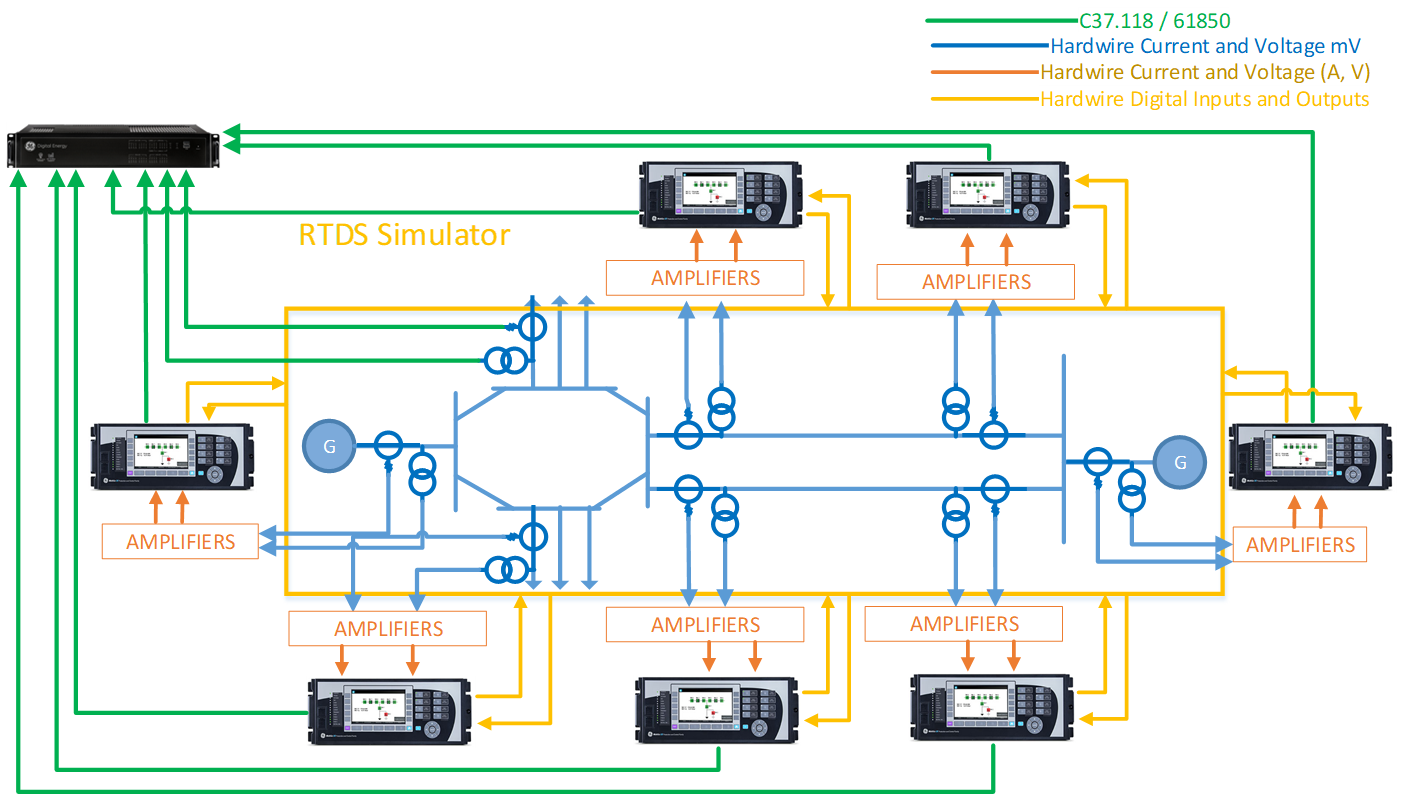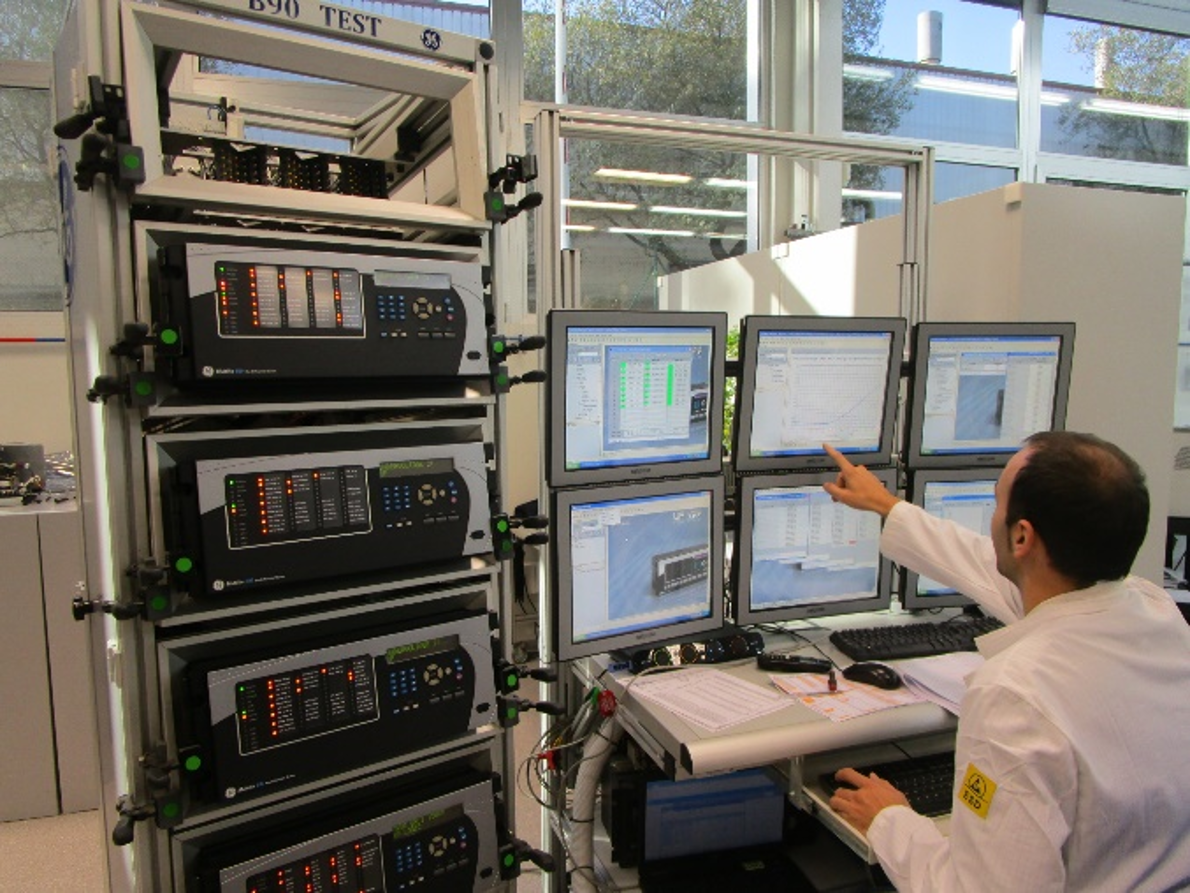Real-Time Digital Simulation Services
Real-Time Digital Simulation (RTDS) has emerged as a crucial technology in the face of the evolving challenges that the electrical grid faces, such as the integration of distributed energy resources (DERs), better grid resilience, smart grid technologies, and the demand for electric vehicles (EVs). We support customers with our four dedicated RTDS laboratories to ensure reliable and robust grid operations during and after disruptive events through the following services:
Real-Time Digital Simulation Services
Real-Time Digital Simulation (RTDS) has emerged as a crucial technology in the face of the evolving challenges that the electrical grid faces, such as the integration of distributed energy resources (DERs), better grid resilience, smart grid technologies, and the demand for electric vehicles (EVs). We support customers with our four dedicated RTDS laboratories to ensure reliable and robust grid operations during and after disruptive events through the following services:
Overview
The RTDS can simulate the electrical power system in real-time. Powerful processors work in parallel to simulate the output of an electrical system or network in terms of currents and voltages.
HIL Testing
The RTDS is connected to voltage and current amplifiers which convert the RTDS command signals into voltages and currents. The relay’s outputs can be connected to the RTDS which can interpret these signals and take certain actions (open a breaker, calculate tripping time, etc.), thereby closing the loop. This can only be achieved with a real-time simulator.
The closed-loop interaction of the protection system with the network model provides insight on both the performance of the relay scheme as well as its effect on the power system. A simple schematic of HIL is shown below.

A model of the power system is implemented on the RTDS that includes the high-voltage components (e.g., lines, breakers, instrument transformers, power transformers, generators, etc.) plus the required protection and control functions not included in the equipment under testing.
Illustrated below is a typical topology for WAMPAC testing through RTDS, where detailed models of the instrument transformers (CT, PT, and CVTs) provide signals to amplifiers that convert the values to real secondary values as if we were on a real power system. PMU and IEC 61850 sampled values can also be included as part the outputs of our system in tests for HIL. Digital inputs and outputs are also exchanged between relays.

Use Cases
Use Case 1 - Island Protection Implementation
Challenge: A customer needs to detect an islanding condition and identify events in the grid that could affect the point of interconnection (POI).
Value Added Proposition: Determine the parameters and methodology to trigger islanded identification. RTDS tests for validation purposes for loss of generation detection through sudden or cascade loss, loss of load detection through sudden or cascade loss, and trip to island from the external grid.
Benefits: Allow plant operation during islanding conditions through balance of load and generation.

Use Case 2 - Settings Audit
Challenge: A customer is facing unexpected protection tripping, impacting plant production. Undesired blackouts are costing $1M of lost profit per plant maloperation.
Value-Added Proposition: Existing settings are audited in an HIL environment with the same relays involved in plant operation. Multiple scenarios and faults are analyzed, and new setting proposals are tested on several cases when any finding is uncovered. A final report with findings and recommendations to improve setting coordination is delivered.
Benefits: Plant operation time is increased due to proper coordination, and time-to-repair is reduced through fast identification of the fault location. RTDS tests improved coordination between HV and MV sides. Some of the findings included miscoordination between bus coupler and feeder protection elements, phase undervoltage elements, and interlock inhibitions.
Use Case 3 - System Integrity Protection Scheme Validation
Challenge: System Integrity Protection Schemes are complex systems where multiple devices must be tested at the same time in the most realistic conditions due to their criticality in power system stability.
Value Added Proposition: RTDS tests become a mandatory requirement for factory acceptance test (FAT) to validate all dynamic test scenarios. Analog values from the electrical system are simulated, amplified, and hardwire to IEDs included in the SIPS, and additional information can also be sent directly from the test system to the SIPS central unit through PMU or IEC 61850 exchange, depending on the project design.
Benefits: These tests can highlight unforeseen scenarios and reduce commissioning time and minimize disruption to the operational network.



